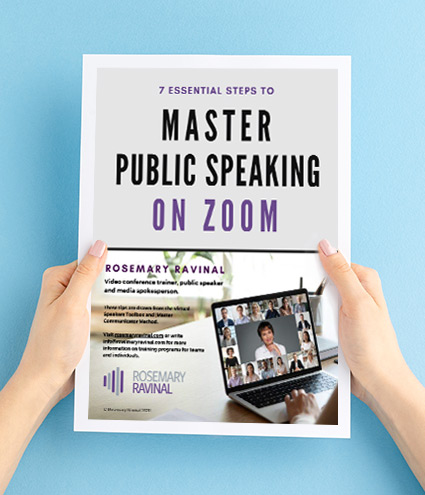When you are communicating your big ideas, persuading, and inspiring others, it is your voice that helps establish your authority and humanity. You have heard from me and others that 90% of what people communicate is visual. Hence the enormous benefit of video conferences. But we cannot ignore the fact that the 10% of verbal communication still carries a ton of weight.
Yet audio problems continue to plague meetings on Zoom and other platforms. Besides the ubiquitous “You are on mute,” there are audio lags, echoes, static, background noise and other glitches that disrupt the flow of meetings.
Furthermore, bad audio also leads to ‘listener fatigue’ and inhibits engagement because people simply cannot follow what is being said. Without the ability to converse properly, teams cannot explore ideas well, deterring the purpose of the meeting.
A study by the University of Southern California and the Australian National University shows that audio quality influences whether people believe what they hear — and whether they trust the source of the information. The takeaway from the study is that sound quality has a direct correlation to credibility.
In the new normal of hybrid work, we must accept that video conferencing is here to stay. In fact, it may increase as companies implement flex schedules to accommodate remote and co-located teams. If you want to ensure that everyone can understand what you say, it may be time to explore ways to improve your audio quality.
Here are six ways to sound better on video calls:
1. Perform an audio quality test.
If you are using the computer’s default or webcam microphone, it may be time to do a system check. Do an audio test with the equipment you already have before you invest in a new microphone.
Headset, EarPods, wired earphones, or webcam microphone? Record yourself reading the same script with each device. One great resource to measure speech quality is Harvard Sentences. It is a collection of hundreds of phonetically balanced phrases used for standardized testing of Voice over IP, cellular, and other telephone systems.
Play back the recording and compare the sound quality. Start a video call with at least two friends or co-workers and do the same test. Have them listen for crisp diction, background noise, room acoustics and echo. Take note that wireless microphones are prone to interference, static noise, and intermittent dropouts.
You may observe marked differences among these options and determine if you need to invest in better equipment.
2. Upgrade to a better microphone.
Buying an external podcasting microphone may be the single most important step you can take to enhance your audio quality and clearly capture your natural voice. A decent external condenser microphone may cost from $60 to $150. Most plug directly into your computer via USB and do not require a sound card. Purchase a pop filter or pop shield accessory to soften the “popping” sound when you make p, k, d, b and g sounds.
The New York Times’ Wirecutter newsletter consulted tech and recording professionals and tested more than 11USB microphones. Their top three pics are: Blue Yeti ($130), Shure MV5 ($100) and Amazon Basics Desktop Mini Condenser Microphone ($60).
3. Adjust your distance from the microphone.
If you are using a microphone built into your computer or webcam, make sure you are about two feet away and speak directly toward it. For an external microphone, position yourself about six inches away. Also make sure that your microphone is not picking up extraneous sound from your speakers, which can be an issue if you are using external speakers.

4. Disable built-in noise-suppression features.
By default, Zoom enables a suite of sound enhancements to suppress background noise such as a whirring fan or passing traffic. In some environments, though, these settings can make your audio choppy. If this is the case, you can disable them. Go to audio settings, click advanced and use the drop-down menu to disable audio processing options.
5. Check your bandwidth.
Make sure you have sufficient internet bandwidth for audio. Try switching from Wi-Fi to a wired internet connection to increase the bandwidth available to you. Close all unneeded applications and program tabs during the meeting. You can also turn off your video temporarily if you are experiencing intermittent audio failure.
6. Experiment with noise-cancelling software.
If you work in a busy environment with street noise and other people moving about, you may want to try an AI-powered noise-cancellation extension for Zoom and other video conferencing apps. Krisp works better than the noise-suppression feature on Zoom to calibrate the acoustics. The app removes background noise and echoes from meetings leaving only the human voice.
Take the necessary steps to ensure that your warm and natural voice is heard clearly. Check your existing equipment, upgrade where you can, and optimize your connections. At the end of the day, the goal is to make virtual more human and help you show up as your best and authentic self.






